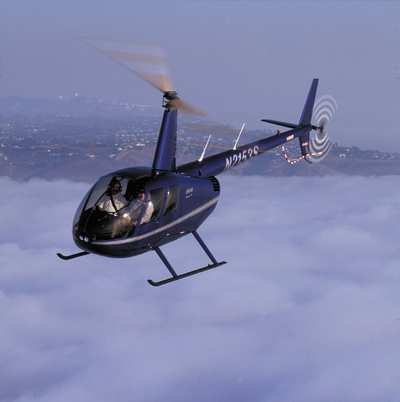Updated Factual Report Paints Disturbing Picture
 In an updated factual
report posted recently, the National Transportation Safety Board
says poorly-coordinated maintenance practices by overworked
maintenance personnel may have contributed to the fatal March 27,
2007 downing of a Robinson R44 near Jacksonville, FL.
In an updated factual
report posted recently, the National Transportation Safety Board
says poorly-coordinated maintenance practices by overworked
maintenance personnel may have contributed to the fatal March 27,
2007 downing of a Robinson R44 near Jacksonville, FL.
As ANN reported, the Silver
State Helicopters helo impacted in a nose-down attitude on Ponte
Vedra Beach, killing the two persons onboard. In a Preliminary Report released
about 10 days after the accident, the NTSB noted the helicopter had
just come out of maintenance... and was missing attachment hardware
to its control system.
In its updated report, the NTSB details repairs made to the
helicopter's mast fairing ribs during a routine inspection.
"The helicopter's most recent inspection, a 100/300-hour
inspection, was completed on March 26, 2007," the report states.
"At the time of the inspection, the total aircraft time was 861.6
hours. The airframe and engine were inspected in accordance with
their respective manufacturer's maintenance manuals. According to
the airframe logbook entry for the inspection, the mast fairing
ribs were removed and replaced. A review of the Robinson
Maintenance Manual Inspection Checklist used by the mechanic for
the 100/300-hour inspection revealed that the mechanic initialed
the blocks, "Unairworthy" and "Repaired" for the mast fairing rib
inspection item.
"During the mast fairing rib replacement, the two forward
swashplate push/pull tubes were removed from their respective
hydraulic servos. Prior to the aircraft being returned to service,
the mechanic and a company pilot performed a 0.5-hour maintenance
test flight. The accident flight was the first flight performed
after the maintenance test flight."
The NTSB then summarizes statements made by mechanics at Silver
State's facility in Jacksonville, who worked on the helicopter
shortly before instructor Tamara Williams, 38, and student Justin
Wyatt Duncan, 24, took off on the fateful flight, according to the
Florida Times-Union.

Part of that summary reads as follows:
"Upon informing the mechanic of the investigation's findings,
the mechanic stated, "I can tell you exactly why that happened."
The mechanic then proceeded to explain to the NTSB IIC his reasons
for the investigation's findings, which included the following: 1.
He was pulled in all directions by company personnel since his
arrival at that facility; 2. The "reassembly was not opposite of
the disassembly," which was a personal maintenance practice he used
to eliminate errors; 3. A couple of nights prior to the completion
of the inspection and the maintenance test flight, the apprentice
wanted to stay late (with the mechanic) and finish a certain
section of the inspection which involved the mast fairing area. As
a result, the mechanic forgot to go back and secure the hardware
connecting the two push-pull tube to servo joints; 4. The company
was understaffed with maintenance personnel."
 Those statements were
backed up by the lead mechanic, according to the NTSB, which added
there was apparent pressure on the maintenance staff to expedite
repairs to the accident aircraft... while they were also being
pulled away for other duties:
Those statements were
backed up by the lead mechanic, according to the NTSB, which added
there was apparent pressure on the maintenance staff to expedite
repairs to the accident aircraft... while they were also being
pulled away for other duties:
"The lead mechanic reported that the mechanic who performed the
inspection on the helicopter was first "under the impression" that
only a 100-hour inspection was required, and approximately 70
percent through the 100-hour inspection, he realized the aircraft
needed a 300-hour inspection as well. During the inspection, the
mechanic noticed the cracked mast ribs and the lead mechanic
provided assistance with that during the course of the
inspection.
"A visiting pilot notified the lead mechanic that the accident
helicopter needed to be ready to fly on March 25th, as it was due
to be in Texas on March 26th. Between March 19th and the day of the
accident, the lead mechanic reported that several aircraft required
maintenance and he also was involved in "shopping for tools" and
preparing a crash repair estimate in Melbourne, Florida. On March
23rd, two new Robinson R22 helicopters were received at the
Jacksonville facility. The lead mechanic reported that the
Jacksonville facility was the "receiving station for the southeast"
and all new incoming helicopters required offloading, receiving
inspections, blade installations, track and balancing, [operations]
checks, and flight checks. In addition to the flight academy
helicopter maintenance, the lead mechanic reported that there were
two transient Bell 206 helicopters in the facility. One of these
helicopters required a 50-hour inspection and the other required
maintenance to the avionics system."
The lead mechanic then took the somewhat unusual step of making
three recommendations to the NTSB "to prevent future
accidents:"
- "Have at least two permanent mechanics at each site allowing
one to act as [Quality Control] to the other.
- "When scheduling additional aircraft at a location, provide
additional maintenance personnel.
- "Set mandatory show time for salaried personnel."
Silver State Helicopters was formed in 1999 in Henderson, NV,
and has since grown its operations to several states. The company
focuses primarily on flight training, but also conducts air tour
and charter operations.
The company has faced several lawsuits over the years, including
a November 2006 lawsuit
accusing the company of false advertising, in its claims students
could earn a rotary-wing certificate in 12 to 18 months, and then
get a job as an instructor. Plaintiffs said the company couldn't
keep its end of the bargain, due to a lack of qualified
instructors, and helos.
 ANN's Daily Aero-Linx (04.13.24)
ANN's Daily Aero-Linx (04.13.24) ANN's Daily Aero-Term (04.13.24): Beyond Visual Line Of Sight (BVLOS)
ANN's Daily Aero-Term (04.13.24): Beyond Visual Line Of Sight (BVLOS) Airborne 04.09.24: SnF24!, Piper-DeltaHawk!, Fisher Update, Junkers
Airborne 04.09.24: SnF24!, Piper-DeltaHawk!, Fisher Update, Junkers Aero-News: Quote of the Day (04.14.24)
Aero-News: Quote of the Day (04.14.24) ANN's Daily Aero-Term (04.14.24): Maximum Authorized Altitude
ANN's Daily Aero-Term (04.14.24): Maximum Authorized Altitude





